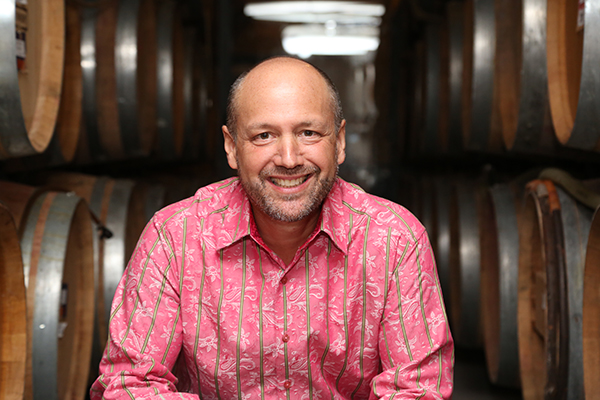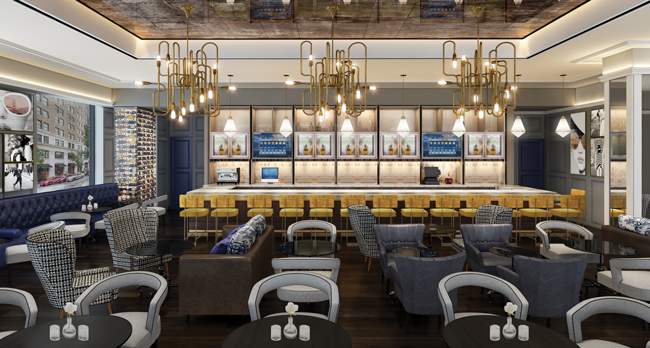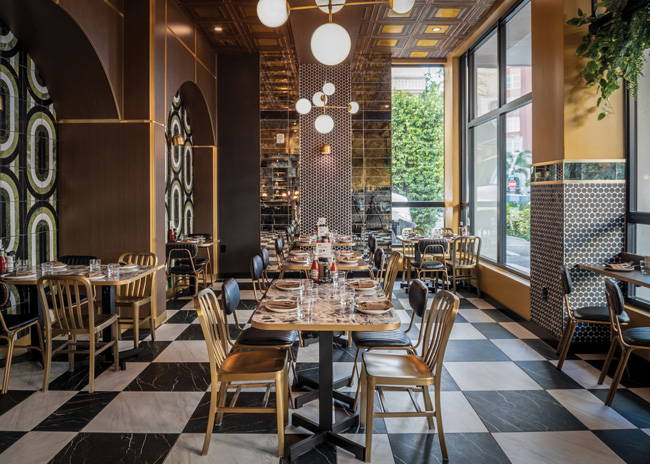In designing and laying out restaurants, one area that’s among the most challenging — and the least enjoyable — is restrooms.
Multiple types of codes dictate their basic design, they’re hidden out of site and they take up valuable space that could otherwise be devoted to generating revenue or enhancing operations. But every restaurant needs them and if you get them wrong, or pay insufficient attention to restrooms in the design process, you do so at your peril.
Study after study proves that the state of restaurant restrooms can ultimately leave a much stronger and more lasting impression on guests than food and service. If that impression is bad, chances are they won’t return.
So how to get restrooms right? It starts with paying close attention to code requirements for number of fixtures needed, based on occupancy, and handicap accessibility, dictated by the Americans with Disabilities Act.
“That’s first and foremost. When you’re laying out the initial choreography you start with making sure you have the right number of fixtures and a plan to be ADA compliant,” says Tanya Spaulding, principal at Minneapolis-based design firm Shea. “Bathroom layout cannot be an afterthought.”
From there it’s all about creating restrooms that are:
- Easily accessible but discretely located
- Properly sized to handle anticipated volume
- Highly functional and easy to maintain
- Thoughtfully designed and equipped for the guest demographic, whether families with kids, professional singles or seniors
- Aesthetically pleasing and on-brand
Stalls or Rooms?
From the “form” perspective, one key consideration of restroom design — beyond ensuring code compliance — is stall style. Choice here depends largely on brand positioning, advises Spaulding. “If the space is available, more restaurants are opting for single, individual rooms — sometimes unisex, sometimes not,” she says. “A much greater sense of quality is conveyed when you’re able to use full-height walls and doors instead of stalls. There are cost implications to that, but if it’s important to the brand, it has to be considered.”
While fully enclosed private rooms and water closets do provide a better experience for guests, stalls separated by typically ¾-inch panels can save both money and space, says Los Angeles-based architect and designer Stephen Francis Jones. “There are some nice new materials available for these partitions,” he notes. “The big thing to keep in mind, however, is that they have to be durable and washable.”
Jones says another space- and money-saving tactic that some restaurants are exploring, particularly casual operations and those in urban locations where space is very limited, is communal sink and mirror stations. “Often, you’ll see unisex stalls that then share these facilities in an exterior area,” he says. “They usually have a long, trough-style sink. Health department and ADA codes are so strict that [making] multiple sinks work in multiple restrooms can be tough. If you only have to do it once, in a communal area that meets the codes, it can save you. But you really have to consider whether it fits your brand and your customer demographic.”
Consider Process and Flow
Regardless of placement of sink — and most continue to be within traditional restrooms — thinking about “process” is critical to creating a functional, easy-to-maintain space. “You don’t want to end up with water all over the place because of bad design. The sinks or fixtures might look really cool, but you have to think about the whole hand-washing process — how you turn on the water, access the soap dispenser, rinse, grab a towel or use the dryer, and exit,” Jones says. “Those things all need to flow within a small area so you’re not dripping water all over the place. If you offer paper or cloth towels, think about where those are located and how they’re both accessed and disposed of.”
Spaulding adds that product innovations over the past few years, including automated fixtures and more appropriately designed sinks, have made this aspect of restroom design easier in some respects. “There’s been lot of trial and error, from sinks to towel dispensers and hand dryers,” she says. “Some of the best are sinks that have the right engineering and the right placement of the faucets to eliminate water splashing up on the guest, the counter, walls or onto the floor. We’re also seeing innovations that combine water faucet and dryer in a single fixture. Our challenge as designers is to figure out which of these things are novel versus which actually make sense.”
Making sense, when it comes to fixtures and finishes in a restroom, always comes back to durability and cleanliness. The key is to select high-quality materials that are easy to clean and maintain, and that stand the test of time.
“When you use things like slate or black marble, you get a lot of stains, for instance,” Spaulding says. “More and more, we opt for primarily neutral colors and simple, quality finishes such as tile on walls that convey a timeless sense of cleanliness. You want the restrooms to look fresh and spotless at any time. If you want to incorporate character or statement aspects, do it in areas that are easy to change out and easy to maintain, such as graphics or artwork. You can be very creative in those areas without being too creative with the materials you put on the walls or floors. You might be tempted to put in a fixture or design element that looks really cool, but if it doesn’t work or is annoying for some reason to the guest, they’re going to remember it more for being annoying than for being cool.”
Lighting is a big part of the equation and restrooms aren’t the place to either get gimmicky or disregard quality. The right amount and quality of light — not too bright, not too harsh, and definitely not blue — is critical.
“If you get the lighting wrong, you can really screw up a person’s experience,” Jones says. “Everyone looks terrible in blue light, for instance, and you don’t want lighting directly overhead because that creates monster shadows. You want balanced light from the top and sides and warm tones so you come out feeling like you look great. Luckily, LED lights have improved a lot in this regard and there are plenty of good, affordable products to choose from.”
Incorporate Branding
For many restaurant brands, creating restrooms that make a statement with high-end, creative designs is part of the brand DNA. They aim to create memorable restrooms that get people talking.
That’s fine, say Jones and Spaulding, as long as the end result is also functional and enhances the guest experience. Cool only goes so far: If the toilet doesn’t flush or the soap dispenser doesn’t work, those things quickly negate any cool factor.
That being said, incorporating restroom spaces into the total brand experience is important. Selection of colors, wall graphics and artwork that convey branding messages — even fonts and imagery used on the restroom doors — help to integrate these important spaces into the full design concept.
“Branding should not stop at the restroom door,” says Jones. “Whatever the design theme is in the front of the house should extend to the bathroom. You want that experience to be consistent and you can have some fun with it while still exercising common sense.”



